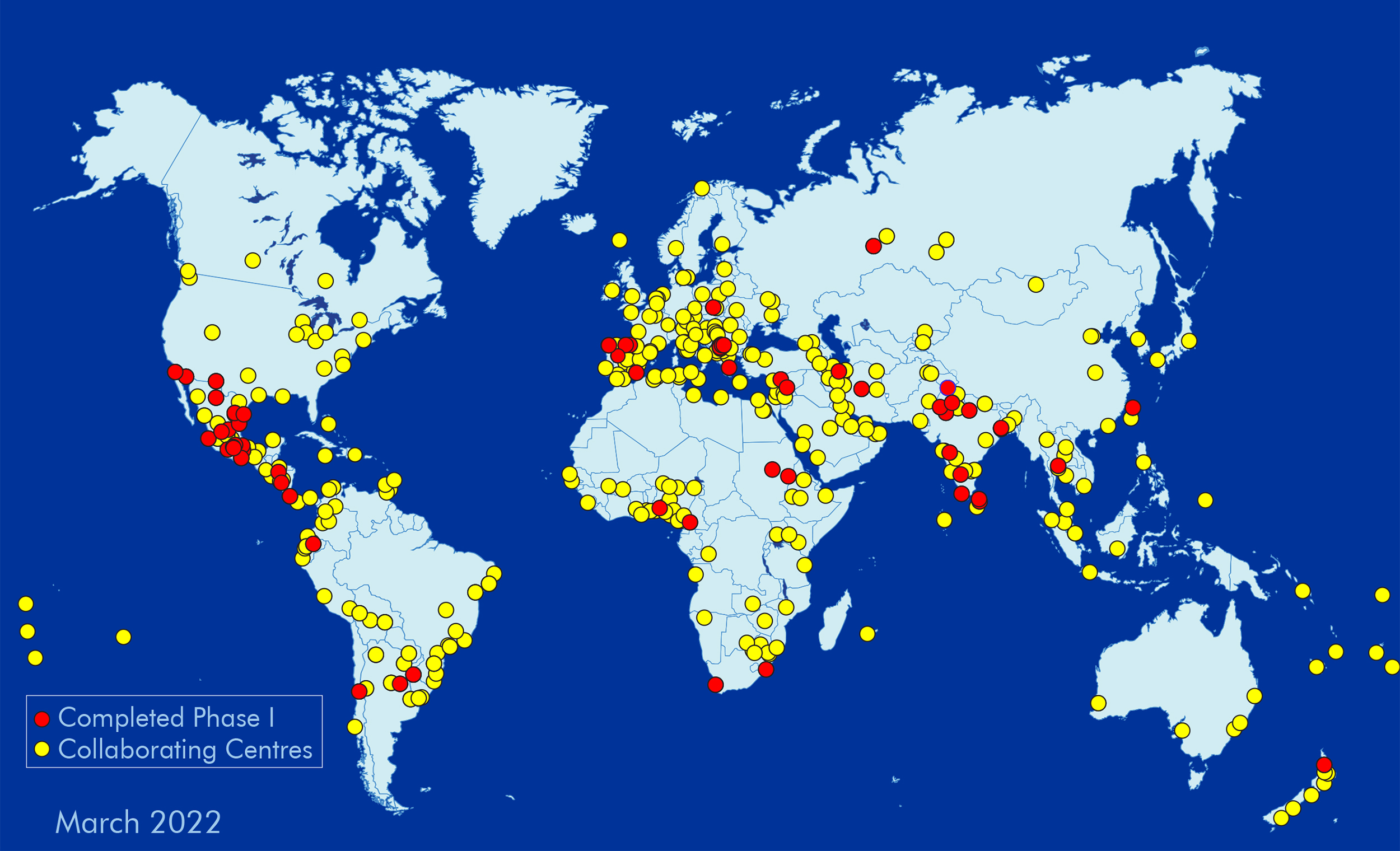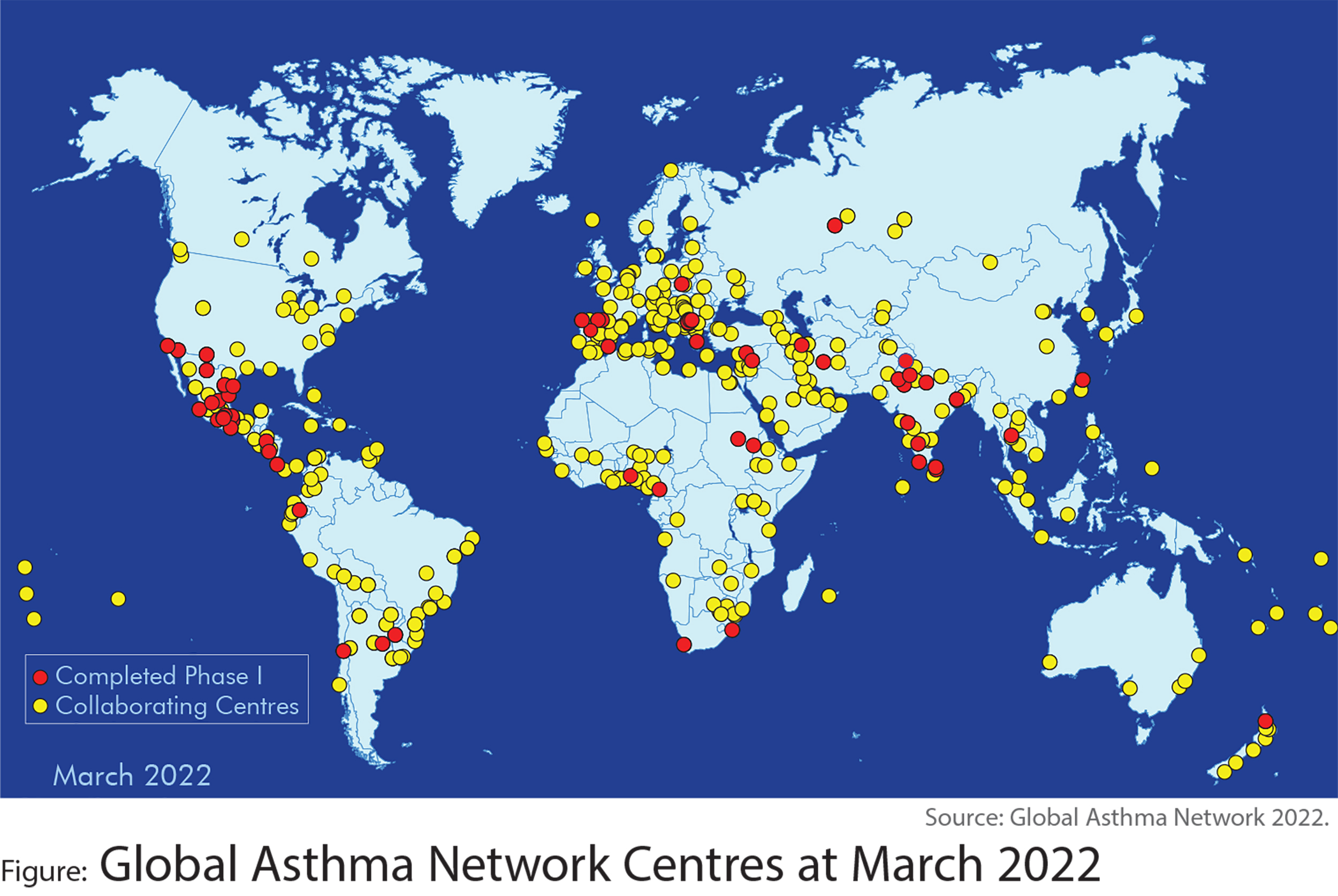
The Global Asthma Network
Asthma is an important non-communicable disease (NCD) affecting people of all ages and is a large worldwide health problem, especially in low- and middle-income countries (LMICs). The Global Asthma Network (GAN) is a joint initiative of members of the International Study of Asthma and Allergies in Childhood (ISAAC) and the International Union against Tuberculosis and Lung Disease (The Union), retaining key elements of both organisations. GAN was established in 2012, following ISAAC and The Union’s co-production of the first Global Asthma Report (GAR) launched in 2011. GAN is coordinated by a 13-member Steering Group who are authors of this chapter. Standardised studies of the global burden of asthma are vital, to further our understanding of asthma, and may contribute to reducing asthma prevalence, severity and mortality. GAN has established a unique network of collaborators enabling a range of such studies to advance knowledge about asthma. The aspirations of GAN are listed in the Table.
Activities of GAN
GAN has a large network of investigators from 386 centres in 138 countries, who have been engaged in a wide range of work. GAN also published GARs in 2014 and 2018. GAN investigators have contributed to a number of on line surveys providing new data on various aspects of asthma such as the availability of (i) asthma guidelines; (ii) national asthma strategies; and (iii) the availability of affordable, quality-assured, essential asthma medicines, all of which were summarised in GAR 2014. GAN Phase I (below) has been undertaken from 2015-2020. The main findings have been published and further publications are emerging. More recently GAN developed and undertook a survey in 2020-2021 on COVID-19 in children with asthma. The findings are summarised in Chapter 6.
The figure shows the distribution of GAN centres. The red circles are centres that completed the Phase I fieldwork. The collaborating centres participate in other activities such as online short surveys.
GAN Phase I
GAN Phase I (Chapter 3) has extended the proven surveillance methodology of ISAAC Phases I and III. In addition to 13-14 year old school pupils (adolescents) and 6-7 year old school pupils (children), the survey now includes adults - the parents/guardians of participating pupils. Questions on asthma management and risk factors of asthma identified by ISAAC were also added. GAN Phase I involved: 157,784 adolescents from 63 centres in 25 countries; 101,777 children from 44 centres in 16 countries; and 193,192 adults from 43 centres in 17 countries. The hypotheses for GAN Phase I were: Globally, the burden of asthma is changing in children, adolescents and adults; There is large variation in the diagnosis of asthma; In many locations, asthma is underdiagnosed and its management is suboptimal; and There are potentially modifiable risk factors for asthma. The aims of GAN Phase I were: To conduct asthma surveillance around the world in two age groups of school pupils, and their parents/guardians, measuring prevalence, severity, management and risk factors of asthma following the methods of ISAAC Phase III;
To examine time trends in prevalence, severity, management and risk factors of asthma from centres which completed ISAAC Phases I and III; and To evaluate the appropriateness of asthma management, especially access to affordable, quality-assured, essential asthma medicines, as defined by The World Health Organization (WHO) GAN Phase I has provided, by conducting global surveillance for the first time since 2003, new standardised worldwide data on the prevalence and severity of asthma symptoms in children, adolescents and adults. This enables comparisons to be made over time and to provide a new picture of the global burden of asthma. Importantly, examination of time trends and global variation of identified risk factors may provide new information on causation. Additionally, GAN can provide information about unscheduled visits to doctors, Emergency Department visits or hospital admissions which could be used, at least in part, to measure the burden of asthma to health systems.
GAN Collaborations
GAN has established links with worldwide organisations concerned with respiratory health and NCDs. These include: WHO; Global Alliance against Chronic Respiratory Diseases (GARD); Global Allergy and Airways Patient Platform (GAAPP); NCD Alliance; The Healthy Caribbean Coalition (HCC); NCD Child; and Global Initiative for Asthma (GINA). Collaborations with these organisations and other nongovernmental organisations (NGOs) are essential to ensure asthma prevention and control. Efforts need to be consistent and properly coordinated to be effective.
Establish a global observatory on asthma
There is an urgent need for an ongoing global observatory on asthma, which would track global burden of disease and indicators, including access to affordable, quality-assured, essential asthma medicines, guidelines, diagnostics and health care delivery to identify opportunities to intervene. This observatory could adopt the GAN methodology, which is cost-effective, standardised, used throughout the world and can provide valuable, reliable and ongoing data. Funding to establish this observatory would need to be sourced.
Conclusion
The findings of GAN Phase I have provided, for the first time in two decades, new standardised worldwide data on prevalence, severity, risk factors, and management of asthma in school pupils and their parents/guardians. This is an opportunity to identify and implement strategies which lessen the burden of asthma worldwide. Goal 3 of the United Nations 2015 Sustainable Development Goal is to “ensure healthy lives and promote well-being at all ages”. GAN is contributing towards this goal.


